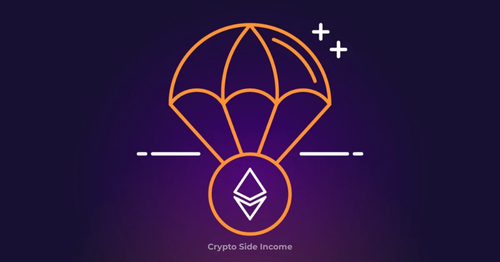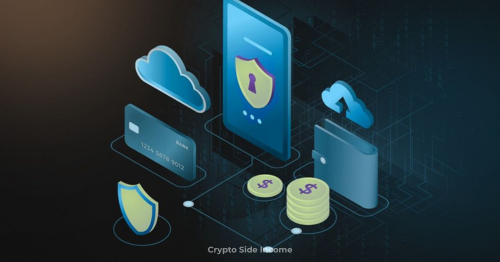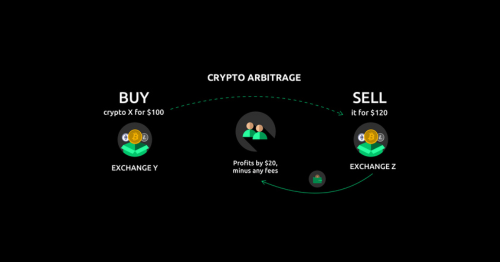
Crypto Staking 101: A Beginner’s Guide to Passive Income
Cryptocurrencies are an emerging asset class that has revolutionized financial systems and the broader economy. They have created new income streams and fostered financial inclusivity, especially in developing countries like India.
These blockchain-based digital assets are a disruptive innovation that has broken down traditional bureaucratic barriers and unnecessary restrictions, making investments more accessible not only to high-earning individuals but also to retail investors. One novel approach that has appealed to investors is crypto staking. It is a convenient way to earn passive income with minimal investments and technical knowledge.
In our blog Crypto Staking 101, discover what staking in crypto means, how to earn staking rewards, and create an alternative income stream. Let’s dive in.
What is Crypto Staking?
Crypto staking involves committing crypto holdings on a blockchain network for a definite time to earn rewards.
Not all blockchain networks can offer staking services. Only Proof-of-Stake (PoS) networks like Ethereum, Solana, Polkadot, etc., support staking. Bitcoin, which runs on the Proof-of-Work (PoW) consensus mechanism, does not offer staking to users.
What is Proof-of-Stake?
Proof-of-Stake is a consensus mechanism in blockchain networks that processes new transactions and creates new blocks. In PoS, the users “stake” or lock up crypto as collateral to validate transactions. These users are known as validators.
Validators are randomly chosen. The more tokens they stake, the greater their chances of validating transactions and earning staking rewards.
Key difference between Proof-of-Work (PoW) and Proof-of-Stake (PoS)
In PoW, block creators or miners compete to solve complicated cryptographic problems to verify transactions. This process is energy-intensive and requires an expensive setup of mining equipment. Miners receive block rewards and transaction fees for completing the mining process.
In PoS, block creators or validators stake instead of solving mathematical puzzles to create new blocks. It is a more economical and energy-efficient process. Validators receive staking rewards and transaction fees as incentives.
What are consensus mechanisms in blockchain?
Blockchain networks are completely decentralized, and it is essential to establish transparency and ensure that network participants collectively reach a consensus or agree on a decision.
A consensus mechanism is a protocol that enables blockchain networks to unanimously achieve agreement among distributed systems to build trust and eliminate fraudulent activities.
Why stake crypto?
Mainly for two reasons:
- Earning rewards: While staking, you lock up your crypto holdings to run the network efficiently. In return, you earn staking rewards.
- Supporting the network: The staked assets serve as collateral to ensure that the validators perform their duties honestly. This enhances network efficiency and security. The network penalizes validators who act negligently or are involved in malicious activities by slashing a portion of their staking rewards.
Is staking the same as interest?
Yes, staking is similar to earning bank interest. In conventional banks, when you deposit money, the bank uses that money for various financial businesses, and in return, you earn interest. In crypto staking, you lock or invest your funds to secure the network and earn staking rewards. The difference? Staking rewards are much higher than bank interest, and you are free to choose the staking platform, method, and validators.
How does Crypto Staking Work?
The 5 steps of crypto staking:
1. Choose the crypto: Only PoS-based cryptocurrencies support staking. Examples: Ethereum (ETH), Solana (SOL), Cardano (ADA), Algorand (ALGO), Polygon (MATIC), TRON (TRX), or Polkadot (DOT). Choose the relevant crypto you want to stake.
2. Buy the crypto: Purchase the selected crypto from an exchange and hold it in a digital wallet that supports staking, like Trust Wallet, MetaMask, Trezor, or Ledger Live. Some blockchains need a minimum amount to be eligible for staking. For example, Ethereum requires a minimum of 32 ETH to begin staking.
3. Choose the staking method: There are different types of staking, like solo staking, delegated staking, or pool staking. Choose the one that works best for you.
4. Select the staking platform: Different staking platforms in India, like Rocket Pool or Lido, charge different platform fees and varying TVL (total value locked). You can also stake through exchanges like CoinDCX or WazirX.
5. Stake and earn: Start staking and receive staking rewards on your supported wallet. If you wish to terminate the staking process, you can “unstake” or redeem the staking rewards early. However, you must verify the “unbonding” or withdrawal period.
What are the Types of Crypto Staking?
There is no one way to stake crypto. Based on your requirements, choose to stake crypto yourself (solo staking), delegate staking responsibilities to a validator, or stake through a pool.
Here are the types of crypto staking:
Solo staking
You stake crypto independently and operate as a validator. You must run your software and hardware. You are in control of your funds and the staking process. The staking rewards are not shared with any third party.
Delegated Staking
You delegate the staking authority to a trusted validator to conduct the node or validate transactions and keep the network secure on your behalf. This is helpful for beginners who do not have experience in staking. The validator takes a percentage of the staking rewards as commission for services rendered.
Pool Staking
In pool staking, multiple token holders contribute their resources to a pool and participate in staking. The entry barrier is low. Since the resources are pooled together, it increases the chances of earning rewards. Staking rewards are distributed among the stakeholders depending on their contributions.
Liquid Staking
This is a new and innovative way of staking where the liquidity of the staked tokens remains intact. In liquid staking, LSTs (liquid staking tokens) are issued during the staking process that represent the staked funds. These LSTs can be traded or used for other decentralized applications, while the original staked amount remains locked for staking. This allows you to earn staking rewards and make profits through LSTs.
Staking-as-a-Service (StaaS)
StaaS are third-party staking service providers who offer a dedicated technical stack, expertise, and a platform to validate transactions or stake on your behalf in exchange for a fee. It requires creating an account in the staking platform, depositing the staking crypto into the platform wallet, and the StaaS provider will handle the entire staking process, including the distribution of rewards.
The staking platform charges a commission, which is deducted from the staking rewards generated. Several decentralized platforms in India, like Lido, Aave, or centralized exchanges like Binance or Coinbase, offer staking services. Staking platforms like Figment and Everstake offer a technical interface, backend support, and enterprise-grade staking infrastructure for individuals, enterprises, and exchanges.
What are Staking Rewards?
Staking rewards are the income or earnings you make for locking your funds in a PoS network, which is used to secure the network and validate transactions. The rewards depend on how much staking resources you have invested.
The rewards are distributed depending on the staking type and platform. Sometimes rewards are distributed daily, weekly, monthly, or when the lock-up period expires.
If you are staking through delegated staking or a third-party service provider, you must pay a staking commission, which is deducted as service fees from the staking rewards.
What is Slashing in Crypto Staking?
If you are into crypto staking, you must know about “slashing.”
Slashing in crypto staking is a penalty imposed by the Proof-of-Stake consensus mechanism on a validator for improper behaviour or participating in fraudulent activities.
The PoS consensus mechanism sets certain rules for users to facilitate seamless and secure network operations and prevent malicious activities. It is implemented to secure the network and the interests of the broader network community.
Slashing is enforced if a particular validator disrupts the staking process or tries to manipulate the network. Depending on the severity of the offense, a portion or the entire fund of the validator’s staked fund is forfeited.
Benefits and Risks of Crypto Staking in India
Benefits
The benefits of crypto staking in India are enticing.
- Generate Passive Income: Crypto staking offers a credible long-term passive income source without active trading. In India, people are still new to digital asset trading. Staking fosters innovation and easy investment opportunities without the need for deep technical knowledge, encouraging new investors to venture into the crypto market.
- Low entry barrier: Crypto staking does not require huge investments. Low-budget or retail investors can spend as little as ₹100 to ₹500 and earn staking rewards.
- Heightens environmental sustainability: Proof-of-Stake is scalable, energy-efficient, and more environmentally friendly than mining in Proof-of-Work blockchains. It enhances the network’s overall functional efficiency and security. It supports low-cost and energy-efficient blockchain projects and significantly reduces the overall carbon footprint.
- Gain governance power: By staking, you also earn the power to participate in the decentralized governance protocol, make important decisions to enhance the overall efficiency of the blockchain, and be a part of the network community.
- Higher returns than banking: Indian traditional banks often require high minimum deposits to earn interest. Crypto staking needs minimal investments and generates higher returns than banks.
- Eliminates geographical barriers: A large section of the Indian population, especially in remote areas, still does not have access to traditional bank accounts. Crypto staking can be done from anywhere without a bank account. Staking can be done on-chain through trusted digital wallets.
Risks
Like any other investment, crypto staking is not devoid of risks.
- Illiquidity: Crypto staking locks the staked funds for a specific period to generate staking rewards. During that time, these funds cannot be accessed. However, liquid staking is an innovative approach that overcomes this limitation through LSTs (discussed earlier in this blog) that can be used for trading and other DeFi activities.
- Price volatility: Crypto investments are subject to price fluctuations and market risks. Consider counterparty risks if you are staking through a platform or third-party validator. You may also incur losses if a validator has been penalized for misbehaviour or fraud.
- Regulatory uncertainty: Crypto investments in India are still largely unregulated. There is no clear regulatory framework, and you may be exposed to legal and regulatory risks, especially taxation.
Final Thoughts
Crypto staking in India has emerged as a potential income-generating avenue where people can lock their assets for a specific period and earn incentives. It requires minimal investments and is a great alternative for those who do not want to participate in active trading, which can be overwhelming for beginners.
You can also reinvest staking rewards and multiple passive income sources over time. However, crypto investments have certain risks. Prioritize research, understand market trends, and implement strong risk management strategies.
Happy Crypto Staking!
Disclaimer: The above content is written for informational purposes only. It does not constitute or endorse any recommendation, solicitation, or financial advice for digital asset investments or trading. Crypto investments are risky. We encourage readers to do due diligence or seek expert advice before investments.

Taniya is a Content Writer with over 6 years of experience in the industry, specializing in Web3, crypto, Blockchain, Tokenization, and Decentralized Finance. She is passionate about creating compelling and well-researched narratives, navigating readers through the emerging trends and dynamic world of Web3 and Decentralized Finance.







